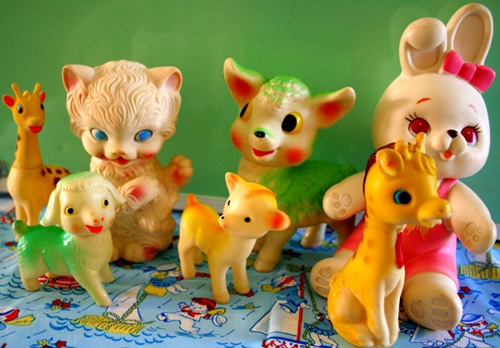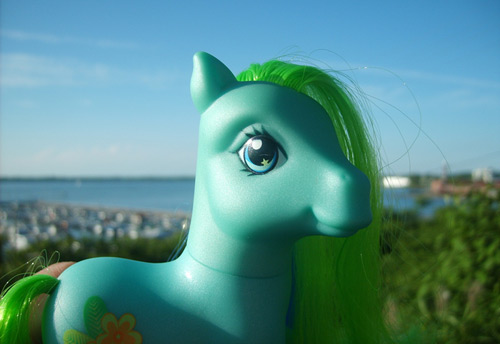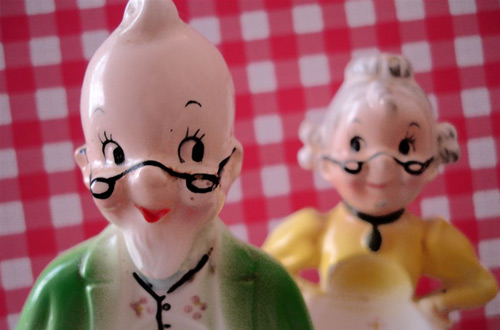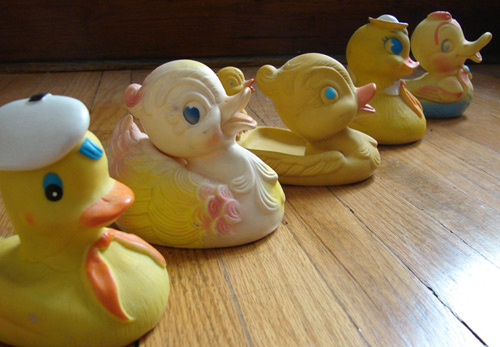There is little doubt that digital media delivers an efficiency that cannot be replicated by its print counterparts. It is simple and instantaneous to find or distribute relevant information on the web, and to then integrate it with other streams of information & data, or manipulate it in fun and useful ways.
In considering that printed newspapers and books will never beat digital at the efficiency game, I feel more attention needs to be paid to serendipity: an experience that is surprising and exploratory; an experience with media that is not based on intentions, but revelations. Some examples as to what I mean:
- The Power of Randomness
I listen to a lot of music, but there are times when I feel that everything on my iPod has been overplayed and spent. It is at these times that I press the "shuffle" feature, which randomly plays song after song, creating fun juxtapositions and revealing the majesty of forgotten songs. - The Breadth of Experience
I pay close to $50 a month for my New York Times print subscription, and regularly try to justify canceling it. But I can’t. I have tried to read the Times on the web, through their Reader, and on my iPhone, but the experience never matches that of the printed newspaper. The difference in consuming the print product is the lack of intention. I find myself reading a wider range of stories, and am always surprised at what will capture my attention. I find it expands my knowledge and the scope of my world in funny ways. It takes me out of my myopic universe of the few topics I normally obsess over. - The Depth of Experience
It’s hard to explain, but few products bring comfort to my week like a fresh issue of The New Yorker does. When it arrives in my mailbox, it is like a present – you truly have no idea what will be inside, but you know that something in it will be highly engaging. While the magazine does deliver a wide scope of topics, it also goes deep in ways that I cannot replicate with a digital product. I find myself reading page after page on topics that I would never even consider typing into a Google search box. - A Direct Connection
To escape the heat, my wife and I went to the mall twice this week. We haven’t been in awhile, making it a somewhat refreshing experience, especially in these hot, hazy and humid days of August. Shopping gives you elements of randomness, breadth and depth, but it also gives something else that the digital experience can’t match: closeness. As my wife and I walked through J Crew and Anthropologie and American Apparel, we looked with our hands, touching everything. It wasn’t enough to see a sweater that I liked – I had to place my hand on it to fully experience it. As much as I enjoy shopping on Amazon and Zappos, nothing comes close to an experience like this.
As I consider these examples, I can’t help but feel that there are lessons for publishers trying to create engaging products in the age of digital mashups, free content and viral videos. For traditional media, the discussion needs to be centered less on "what we were" and more on "what we need now." Some ideas for creating an engaging experience filled with serendipity:
One of the things you learn when polling people for any kind of research is that people think they know what they want, but they don’t. I remember an example of such a survey… someone had just walked into a store, and a few minutes later, they were asked what they did when they walked into the store – what were their intentions and what captured their attention. When their answers were compared to actual video footage, it showed that most people had no idea what really happened! They did completely different things than they said they did.
Like children, we are on a constant journey of discovery, testing boundaries, and finding small ways to surprise ourselves. A good media product should deliver on the deeper needs and behaviors of their audience, not the revisionist results of focus groups and surveys.
There is a hunger for inspiration in the world. We are in a recession – people work hard to provide for their families, and often find there is more to do in a day than there is time. If you can’t create meaning of all of this for them, you can at least give them a kick in the pants – a brief moment of inspiration that transcends the time and place that they are – a moment that speaks to our desire more than our reality.
Deliver an Immersive Experience

The word "experience" has become incredibly overused word in marketing. Strive to give it meaning – to go beyond a relationship of someone simply "consuming" your product. Perhaps your product needs to deliver more than promised, or it needs to ask for something in return. Either way, it should be something unusual, something that Seth Godin might call "remarkable."
We are social creatures. Whenever you can, make it fun, meaningful and easy to connect with others who either use your product, or share a common interest in the market you serve. Think of why people go to any in-person event (a state fair, a sports event, a concert, a party, a conference) – they go for the unexpected. Sure, they feel they have an agenda, but the reason they spend so much time and money to physically go is for those unplanned interactions and the possibility of meeting someone who will inspire or enable.
Expression is a funny thing. For a product, it requires you to give up some control, yet draw people closer to you. It’s like the classic expression: If you love something, set it free.
What might this look like for a newspaper? Perhaps a business focused less on monetizing page views, and one focused more on events, solutions, connections, expression, and education.
What might this look like for a book publisher? Like the music world, the business model is not in the media product, but in the fan experience. Harry Potter is an industry; Getting Things Done is an industry. Publishers need to reinvent their business, not bicker over how much to charge for a Kindle book.





Totally agree regarding the serendipity of the print newspaper. Its exactly why I enjoy train journeys – its the rare chance I have to browse a newspaper – and the breadth of content always provides me with something really interesting that I would have never googled for.
I think online personalization has probably focused too much on 'relevancy', and not enough on the actual discovery experience. The 'most relevant next step' whether music, news, or amazon product is useful – but rarely takes me beyond known interests. “Give the unexpected” is a great way of putting it.
Here's a thought – try the serendipity of Wikipedia… You start off reading a topic, but within 20 minutes you find yourself reading something that you didn't search for, but that is very interesting – partially enabled by the entity/topic level categorisations that structure Wikipedia. Could newspapers learn from this?
Andrew – great points. It's funny, online retailers seem to be leading the charge in terms of delivering the unexpected that still piques one's interests; thinking of Amazon and Netflix. Perhaps newspapers should have a Netflix prize!
Have a great day.
-Dan
Yes true! Except I don't think newspapers can afford it!
I think the problem is slightly different too. Retailers have a financial incentive to get you to choose something. Publishers don't mind what you choose, as long as you keep choosing something (ie continue browsing). So the goal of retail recommendation is “give them what they want”, whereas for publishing it is “give them what they want, and then lead them on a journey from that start point.”